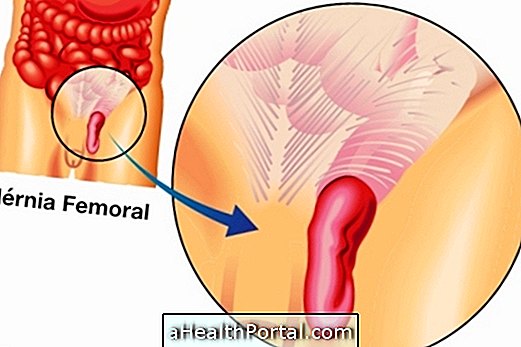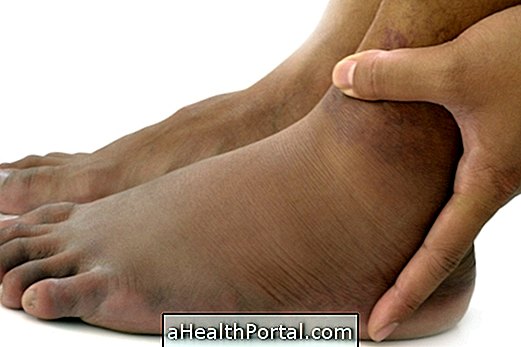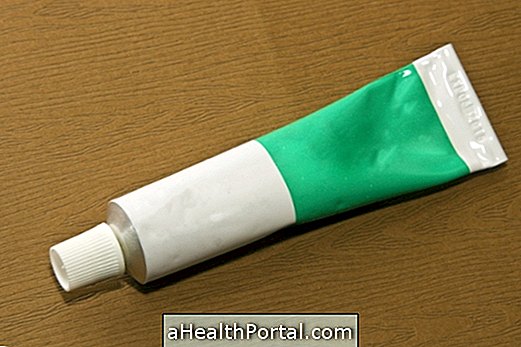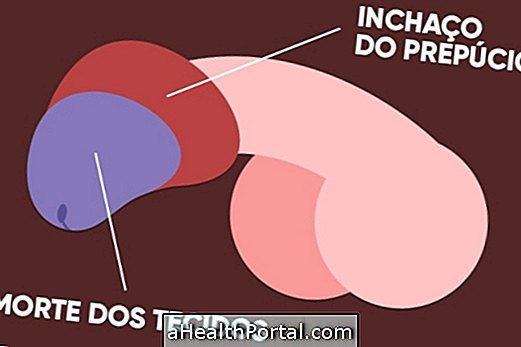Seroma is a complication that can occur after any surgery, being characterized by the accumulation of fluid below the skin, close to the surgical scar. This accumulation of fluid is more common after surgeries in which there has been cut and manipulation of the skin and fat tissue, such as after plastic surgery, abdominoplasty, liposuction, breast surgeries or after cesarean section, for example, being the result of inflammation not caused by the procedure and body defense reactions.
The small seroma can be reabsorbed naturally by the skin, resolving after about 10 to 21 days, however, in some cases, it is necessary to perform a puncture with the syringe by the doctor. To reduce this complication, it is recommended to use compressive bandages or dressings after surgery, as well as care to facilitate healing. Check out essential care you should have with the cesarean scar.
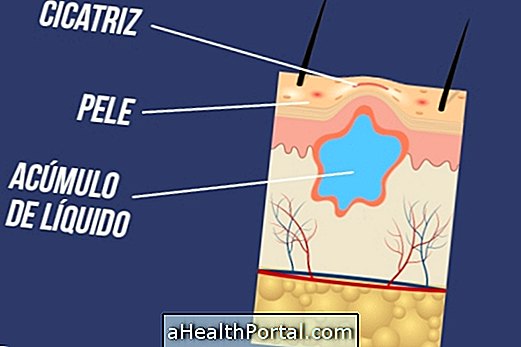
Signs and symptoms
The seroma can be identified from the following signs and symptoms:
- Clear or transparent liquid discharge from the scar;
- Local swelling;
- Fluctuation at the site of the scar;
- Pain in the scar area;
- Reddish skin and increased temperature around the scar.
In addition, there may be reddish or brown coloring when the seroma is mixed with blood, which is more common soon after surgery, and tends to become clearer as healing continues.
As soon as signs of seroma are noticed it is important to consult the physician so that an evaluation can be made and, depending on the severity, the treatment is initiated.
When seroma arises
The seroma usually arises during the first 1 to 2 weeks after the surgery, and is due to the accumulation of fluid in the dead space between the layers of the skin. After the appearance of symptoms that indicate seroma, it is necessary to talk to the surgery that will evaluate the need to perform the treatment.
When the seroma is not treated, the accumulation of fluid that is not removed may harden, forming an encapsulated seroma, leaving the ugly scar. In addition, treatment is also important because the seroma can infect, forming a scar abscess, with release of pus, which is treated with antibiotics.

How is the treatment done?
Seroma treatment is only necessary when there is a large accumulation of fluid or arthritis, because in milder cases the body is able to absorb excess fluid. However, when needed, treatment is done by removing the liquid with a needle and syringe or by placing a drain, which is a small tube inserted into the skin directly into the seroma, allowing the fluid to flow out. Understand better what the drain is for and how to care for it.
If it is necessary to relieve the pain, the doctor can also prescribe analgesic and anti-inflammatory medicines like Paracetamol or Ibuprofen, for example.
The treatment of the encapsulated seroma is more complicated, requiring the application of corticosteroids or surgery for its removal. Ultracavitation is also a method that can be used because it is based on a high power ultrasound that is able to reach the region to be treated and to form reactions that stimulate the elimination of the liquid.
In cases where the seroma infects, the treatment is usually done with antibiotics prescribed by the doctor. In the case of an encapsulated seroma, the doctor may recommend surgery to remove the fluid and to make the scar look more beautiful.
Home options
The home treatment aims to prevent the seroma arising and fight it at the first signs. One of the home options is the use of compressive belts depending on the type of surgery, and it is usually indicated the use after abdominal and cesarean surgeries. Here's how to recover from the fastest C-section.
In addition, it is important to ask the doctor about compresses or ointments that can be placed on the scar, since they accelerate the healing process and reduce the swelling that usually arises after the surgical procedure. Also important are foods that stimulate and facilitate healing, such as orange, pineapple and carrot, for example. Check out a complete list of foods that accelerate healing.
What can cause seroma
Seromas can arise after any surgery, depending on how the body of each person recovers. However, this problem is more common in:
- Extensive surgeries such as removal of the breast in case of cancer;
- Cases requiring drains after surgery;
- Surgeries that cause lesions in various types of tissues;
- People who have previous history of seroma.
Although it is a very common complication, it can be avoided with some simple care like using a strap over the scar location and avoid doing intense exercise without indication of the doctor.
In addition, if there is an increased risk of developing a seroma, the doctor usually puts a drain during surgery so that the accumulated fluid may leak out as the wound heals. Check out the key care you should take after abdominal surgery to speed recovery.
